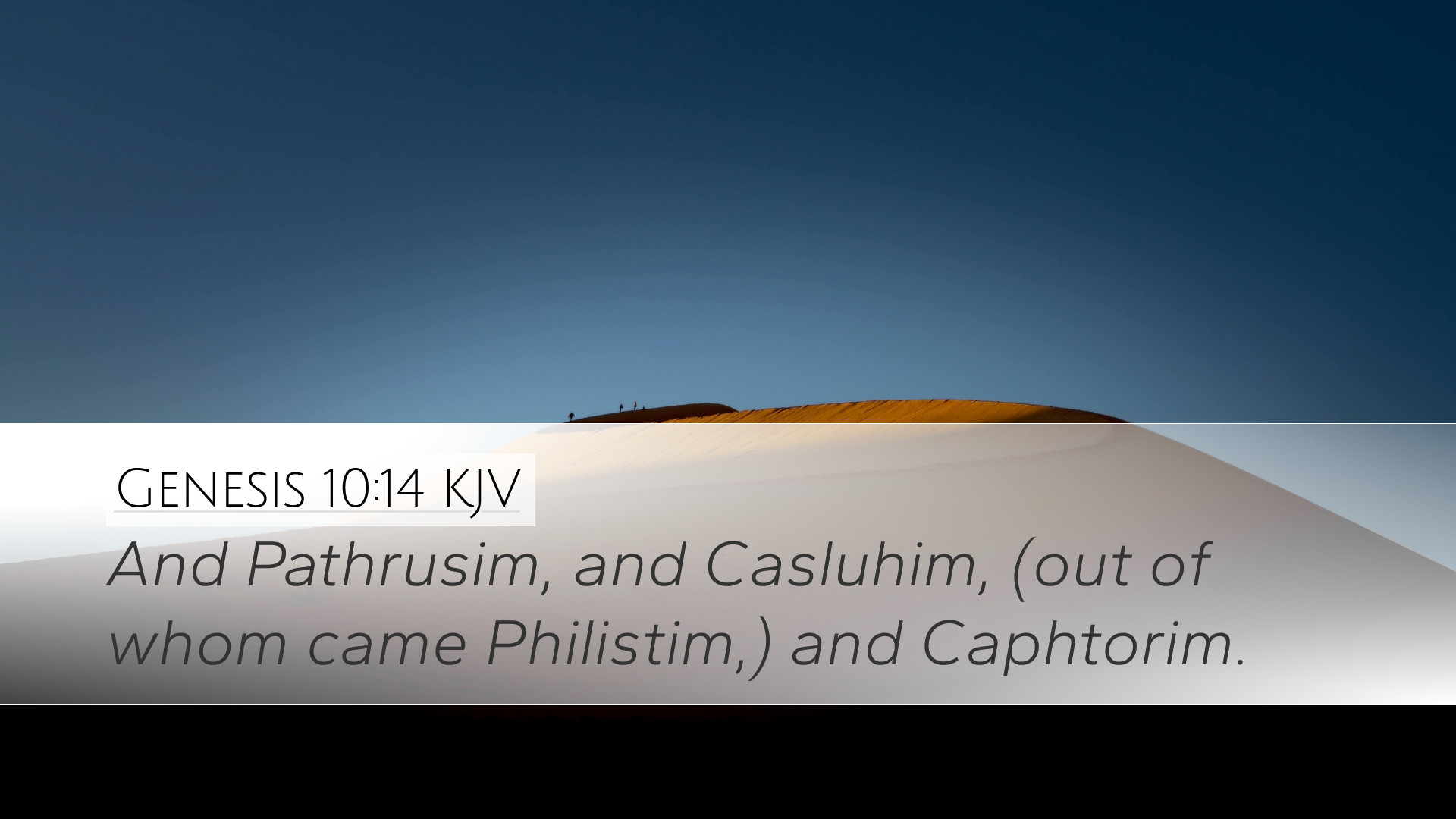Commentary on Genesis 10:14
Verse: Genesis 10:14 - “And Pathrusim, and Casluhim, (of whom came the Philistines,) and Caphtorim.”
Introduction
Genesis 10 provides a genealogical account of the descendants of Noah, showcasing the spread of nations post-flood. It is a pivotal chapter that lays the foundations for understanding the origins of various peoples and nations as mentioned in the Bible. The specifics regarding the Philistines and their origins are particularly noteworthy.
Contextual Analysis
This verse is nestled within a broader narrative that tracks the lineage of Noah's sons—Shem, Ham, and Japheth. The verse specifically discusses the descendants of Ham, indicating the geographical and cultural dispersion starting from the post-diluvian world.
The Pathrusim and Casluhim
- Pathrusim: Often interpreted as the inhabitants of Upper Egypt, the Pathrusim are thought to represent a group that settled in the region of Thebes.
- Casluhim: Associated with the area of Canaan, it suggests a cultural blend leading to the eventual formation of the Philistine people.
These names signify more than mere genealogical data; they represent the historical migration patterns and cultural dynamics of the early civilizations.
The Philistines
Significant to this verse is the mention of the Philistines, a people who became notable adversaries of Israel. The phrase "of whom came the Philistines" indicates the direct genealogical relationship with the Casluhim, thus grounding the Philistines within the scriptural narrative.
- Historical Significance: The Philistines inhabited the southern coastal region of Canaan and are often associated with militaristic and commercial prowess.
- Cultural Identity: Their connection with both Egyptian and Canaanite cultures provides insight into the complexities of their societal frameworks.
- Biblical Role: As recurring antagonists in the Old Testament, the Philistines played crucial roles in various narratives involving prominent figures such as Samson and David.
Exegetical Insights
From an exegetical perspective, Genesis 10:14 illustrates the interconnectedness of biblical genealogies. Albert Barnes notes that the mention of geographical roots solidifies the historical narratives that follow. Adam Clarke emphasizes that these genealogies were significant for establishing rightful claims and historical context in Israel's later narratives.
Theological Reflections
This verse invites theological reflection on God's sovereign orchestration of history. The dispersion of nations is an act of divine providence (as observed in Matthew Henry’s commentary), serving to fulfill God's purpose through the unfolding of human history.
- Divine Sovereignty: The Gilgamesh of all nations and draws a tapestry of human events that lead to the unfolding of salvation history.
- Unity in Diversity: The diversity of nations and identities emphasizes God's plan to reclaim all people groups through Christ.
Practical Applications
Pastors and theologians can derive several applications from Genesis 10:14:
- Cultural Awareness: Understanding the complexities of cultural origins enriches our appreciation for God’s diverse creation.
- Historical Awareness: Recognizing that our faith has roots in ancient history emphasizes the continuity and relevance of Scripture today.
- Evangelical Mission: The need for outreach to all peoples can be seen in the origins and eventual dispersion of nations after the flood.
Conclusion
Genesis 10:14 serves as a crucial point in understanding biblical genealogies, the historical backdrop of nations, and God's sovereign plan. It's a reminder that every individual and culture serves a purpose in the grand narrative of redemption. Both pastors and scholars can find rich insights and profound implications for ministry and theological reflection in this seemingly simple genealogy.


